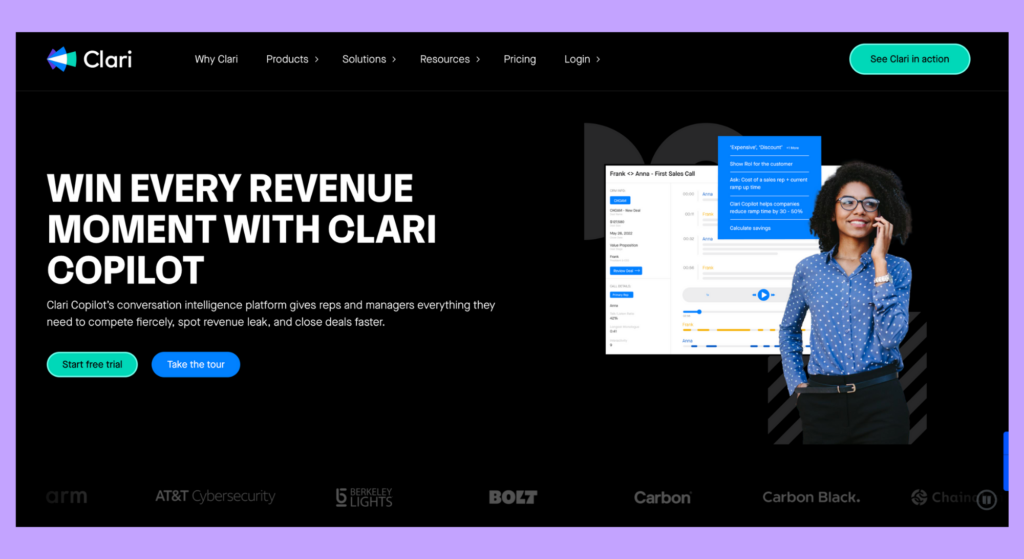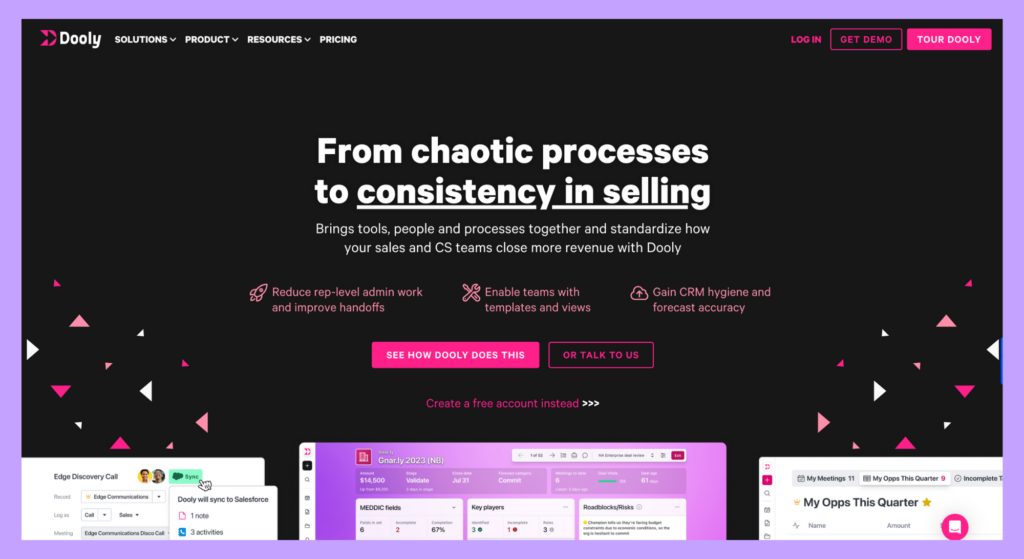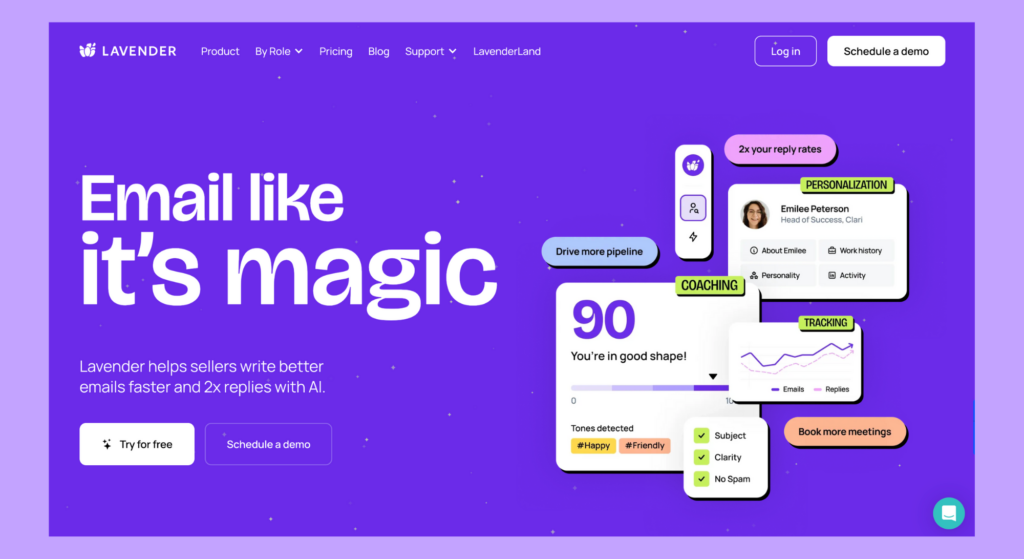AI is still a hot topic in the sales world, and for good reason – 97% of sales leaders and sales ops pros say AI gives reps more time to sell. And we’re not just talking ten minutes here or there. According to recent research, AI tools can save sales reps over two hours every […]
AI is still a hot topic in the sales world, and for good reason – 97% of sales leaders and sales ops pros say AI gives reps more time to sell. And we’re not just talking ten minutes here or there. According to recent research, AI tools can save sales reps over two hours every day.
With more tools available than ever, you don’t want to get caught up trying to figure it all out. The goal is efficiency, after all. It’s time to build a strategy around which AI tools to use for sales – and how.
How to use generative AI for sales
When you hear “AI,” what comes to your mind first? Chances are, you immediately think generative AI tools like ChatGPT and its cousins Jasper and Claude (to name just a few). As a salesperson, you’ve probably dabbled in using generative AI for some emails here and there, but are you using it to its full potential? We’re sharing some interesting ways you can use generative AI to boost your sales efficiency.
Meeting Preparation
Getting ready for an important meeting takes work. Generative AI can lend a hand by gathering key details about the company and people you’ll be talking to. Feed it the company website, LinkedIn profiles, and anything else relevant (or, if you’re using a simpler free version that can’t crawl links, copy/paste the important bits of info).
The AI will summarize the must-know info to help you tailor your talking points. It can also highlight potential areas of interest and make insightful connections you may have missed.
Based on the specific personas you’ll be interacting with, prompt the AI to suggest things like agenda topics and discovery questions tailored to resonate with the particular prospect’s circumstances and priorities.
Messaging Optimization
Sending emails and LinkedIn messages is a big part of sales, but making them shine takes effort and time. AI isn’t really great at generating good copy from scratch (sorry, robots, but it’s true). However, it’s amazing at modifying and processing something that already exists.
Feed the AI your first draft that needs improvement. AI can rephrase and polish your draft emails to make them clearer, punchier, and more persuasive.
If you fire off dozens of emails daily, AI ensures consistency and saves you from the hassle of writer’s block.
Role-playing
Role-playing is vital for sharpening sales skills, but finding willing partners can be difficult. AI provides a handy and capable stand-in to practice with on demand. Set the scene by providing details in the prompt like:
- The buyer’s role, background, and personality traits
- Information about the buyer’s company, industry, and challenges
- How the product/service could potentially provide value
The AI can then embody that buyer persona and respond accordingly throughout the role-play scenario. This allows you to practice your pitch, handle objections, and hone your discovery skills against a formidable digital opponent.
Competitive analysis
Having a solid grasp of your competitors’ strengths and weaknesses is a must. AI tools can quickly provide insights that would otherwise require lots of tedious, manual research.
Even with just the names of your key competitors, you can prompt an AI assistant to give high-level competitive overviews, like:
- What are [competitor]’s main product/service offerings and biggest advantages over other solutions?
- What are [competitors]’s biggest disadvantages compared to other solutions?
- How does [competitor] compare to [your company] in terms of features, pricing, etc.?
- What are their customers saying about them?
In return, you’ll get a succinct summary on your competitors’ positioning, capabilities, pros/cons, and more. Especially if you don’t have a dedicated competitive intel team to feed you insights, AI tools come in clutch to help you self-serve competitive research on demand. This levels the playing field so you can better understand, position against, and overcome competitors in every sales situation.
Persona development
Generative AI can assist in creating solid persona profiles that will help you prepare to tackle conversations with all of your prospects.
When building out and refining persona details, you can prompt an AI assistant with questions like:
- What are the top priorities, challenges, and responsibilities for a [role] at a [company size/industry]?
- How do the goals and pain points differ between [persona A] and [persona B]?
- What are the typical objections raised by [persona] when evaluating [your solution category]?
Based on the AI’s broad knowledge base, it will provide insightful responses that can help you flesh out rich persona profiles to capture their unique needs, motivations, and sticking points.
Other AI tools for sales efficiency
Most people think of generative AI and stop there, but there are so many other AI tools for sales that can give you the efficiency boost you need. We explore a few of them here, but we can’t even come close to providing an exhaustive list. There’s a lot out there, so if you don’t find what you’re looking for in this post, that doesn’t mean it doesn’t exist. These are just some of the top AI tools for sales right now.
Clari Copilot
Clari Copilot is more than just a call recording app (though we love it for that, too). You can also use its predictive AI to figure out the next best steps for your sales team.
Clari has a forecasting tool with built-in AI. It learns your business’s behaviors and presents insights about what turns into closed/won deals and what doesn’t. It can also offer insights as to whether a deal is likely to close when the rep predicts it will based on insights it gains from previous deals.
Clari Copilot is also a powerhouse for feedback and coaching. As part of its call-recording feature, Copilot offers insights into sentiment analysis, rep talk time, longest monologue, and number of questions. This makes it quick and easy for sales leaders to find the info they need to provide helpful advice to their sales reps.
Dooly
Every salesperson’s headache: taking important meeting notes and data and manually entering them into Salesforce. Cutting back on manual admin time is crucial for efficient sales, and that’s what Dooly aims to solve.
Dooly’s in-meeting notes tool automatically syncs meeting notes and important customer data into your CRM (and into the right fields, at that). That means no need to multitask on a call or set aside time to update Salesforce.
The tool also features one-click pipeline edits synced with your CRM so you’re always ready for a pipeline review. Another thing Dooly makes easier? Account handoffs. With handoff templates, complete note history, and AI note summaries, Dooly aims to make the BDR to AE handover as simple and smooth as possible.
Lavender
Lavender is like conversational AI on steroids. Where other tools like ChatGPT will give you more generic suggestions on how to improve your emails, Lavender uses your data to give feedback based on how your prospects interact with your content.
Lavender gives your email a “grade” and tips for improvement to increase your chance of getting a reply. It also suggests ways to personalize your email based on specific prospect data. And the more you use it, the better. Your email score will shift based on your inbox and how email behavior behaves over time so that you’re always optimizing.
There’s An AI For That
Writing an exhaustive list of every tool that could help you make your sales process more efficient would be, well, exhausting. But in the name of efficiency, there’s a pretty cool website that makes finding the AI you need easy. It’s called, fittingly, There’s An AI For That. Set up your preferences by selecting what tasks you’d like help with or searching for them in the search bar. Then, it’ll set up a “for you” page and send emails about tools that fit what you’re looking for. So if you can’t find the perfect AI tool to help you make your job easier, you might just be looking in the wrong place.
Using AI in sales thoughtfully
We just spent all this time talking about how AI can be a powerful ally for sales teams; while that’s true, it’s also important to be aware of any potential drawbacks so you can navigate them carefully.
One major challenge is maintaining the human touch. Sales is a relationship-driven field, and over-reliance on AI could make interactions feel transactional or impersonal. And as we’ve had more time to get to know AI tools, it’s become clear that their information is not flawless. AI tools can be affected by biases during the original training process, resulting in biased outputs. What’s more, they can also get the facts wrong (even going so far as making things up).
The key is to strike a balance: use AI for automating tedious tasks and uncovering insights, but have real people drive core sales conversations, and be sure to fact-check and approach the answers you get from AI critically.
AI is a powerful tool, but it’s not a magic wand (not yet, at least). It requires thoughtful prompting, continuous training, and careful integration into your processes. Undisciplined AI adoption can lead to bottlenecks, bad data, or misguided recommendations. It’s all about having a clear strategy to get full value.
The solution to these drawbacks? Take an “embrace and supplement” approach. Use AI’s strengths to augment your efforts, not replace core sales capabilities. With the right strategy, the human + AI partnership can be a huge advantage for sales that boosts your efficiency.






